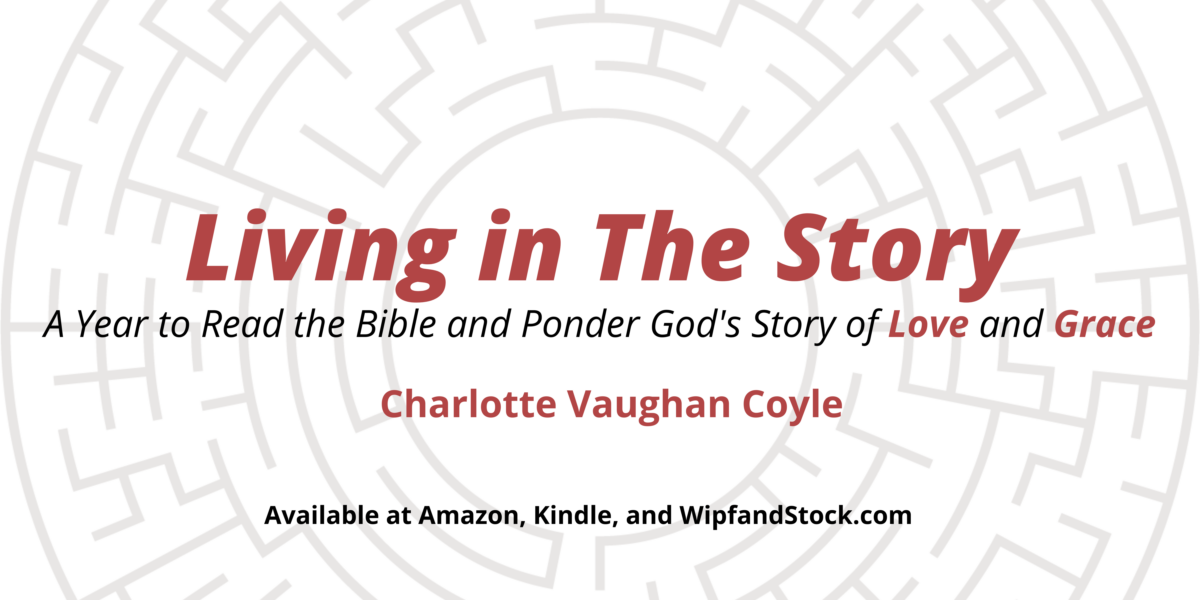As You Read this week, you might recall how some preachers or talk show hosts or protesters at funerals will talk about sin. “Some particular kind of people sinned some particular kind of sin and that’s why this hurricane roared through New Orleans or Houston or Indonesia or wherever.”

Religious communities have never had a shortage of people who will hurt our ears with their self-righteous judgments about other people’s sins and their consequences.
As You Read Genesis 3-11, you will notice how these stories seem to be set out of time. When we start with Abraham and the Patriarchs next week, we will see geographies and genealogies and will recognize that the telling of those stories are more history-like. But the opening chapters of Genesis tell us primeval mythological stories of origins.
“Mythological” is not a put down. Myth is one way to speak about things that are deeply true even if they are not factual or historical. Consider this description from Britannica:
Myth has existed in every society. Indeed, it would seem to be a basic constituent of human culture … A people’s myths reflect, express, and explore the people’s self-image. The study of myth is thus of central importance in the study both of individual societies and of human culture as a whole.
In recent years, Joseph Campbell has taught and written extensively about the power of myth. Myths are the stories we tell that help us to understand where we come from and what is the meaning of our existence. All of our religions include this type of narrative as a way to point toward deep truth that is unspeakable and unknowable.
“Every religion is true one way or another. It is true when understood metaphorically. But when it gets stuck in its own metaphors, interpreting them as facts, then you are in trouble.”
Modern American Christianity has its own special kind of challenges when it comes to getting “stuck” in metaphor. When we allow ourselves to get unstuck, to break free from literal, concrete thinking, then we begin to discover truth that is wider, deeper and higher than simple facts. If you are interested, you might spend some time watching Bill Moyers’ interview of Joseph Campbell.
As You Read Psalms 5, 10, 14 and compare these Psalms to the opening chapters of Romans, you will recognize how Paul’s treatise on sin echoes the Psalmist’s powerful descriptions. Also note that the consequences of the sins of some people will always infect and influence the lives of other people. We who are bound together within this human community live in a complex inter-dependence that has very real consequences in lives other than our own.
As You Read Romans 1-3, understand that Paul is re-telling the story of humanity. See how he alludes to good creation and a generous Creator. Then he considers how sin twisted and bent this goodness into something ugly and hopeless. In the background of Romans 1-3 hovers the Genesis 3 story. Paul was immersed in The Story and writes the letter to the Romans in order to explore and explain how God – through the Christ – is in the process of redeeming the brokenness and hopelessness of all creation.
Paul cites the Psalms and Prophets freely, mixing and matching their colorful phrases with his own understanding of sin and its consequences. He pounds the pagan Gentiles for their immoral, unethical, idolatrous culture. But then he turns and pounds the Jews for their self-righteousness and hypocrisy. All of us are sinners, Paul announces. Each of us individually and all of us together. Naming, recognizing, owning up to this hopeless dilemma is the only way for us to truly appreciate the radical grace of the gospel made known in Jesus Christ.
As You Read John 9-12, you may already know that those little chapter and verse numbers were added to our Bibles many years after the authors wrote. But what you may not know is that the New Testament writers penned their gospels and letters without any punctuation marks. So when we read the Greek text, we do the best we can to translate and interpret where the sentences and paragraphs ought to begin and end.
John 9:3-4 shows us how significant this challenge is. “Who sinned?” the disciples ask and Jesus answers: “Neither this man nor his parents sinned; he was born blind so that God’s works might be revealed in him; we must work the works of him who sent me while it is day…” That’s the way the translators of the New Revised Standard Version place the markings (the markings, remember, that are not really there.)
Now – read these same words this way as an alternative: Jesus answered, “Neither this man nor his parents sinned. He was born blind. (period) So that God’s works might be revealed in him, (comma) we must work the works of him who sent me while it is day…”
What a significant shift in meaning can happen when periods and commas are used one way or another!
We all live in The Story that tells of blindness, brokenness and sorrow. But we must never lose sight of the deeper truth: The Story of God’s presence in the world gives witness to the unfailing, unending work of light, redemption and grace. Each of us individually and all of us together are called to participate in that divine work.
Satellite photo by NASA via Getty Images
Greek text above cites John 3:16.





